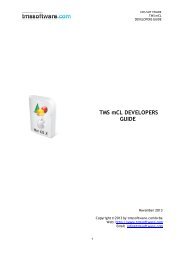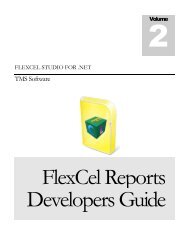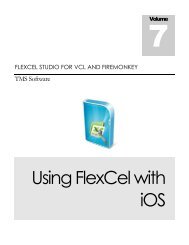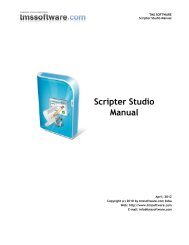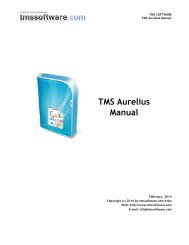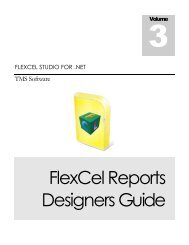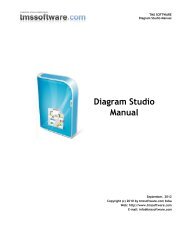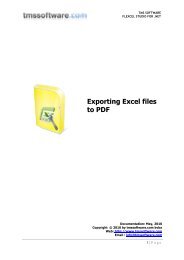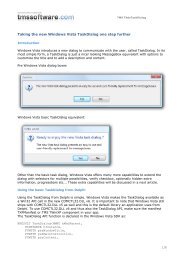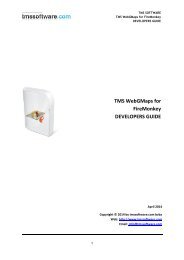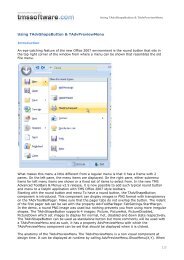Flexcel Reports Developers Guide - TMS Software
Flexcel Reports Developers Guide - TMS Software
Flexcel Reports Developers Guide - TMS Software
You also want an ePaper? Increase the reach of your titles
YUMPU automatically turns print PDFs into web optimized ePapers that Google loves.
<strong>TMS</strong> SOFTWARE<br />
FLEXCEL STUDIO FOR .NET<br />
2. Via User defined functions: User defined functions are classes you define on your code that<br />
allow for specific needs on the presentation layer that it can't handle alone. For example,<br />
you might define a user function named “NumberToString(int number) that will return<br />
“One” when number=1, “Two” when number =2 and so on. On the presentation layer you<br />
would write to obtain the string “Two”<br />
3. Via DataSets: .NET DataSets are a collection of memory tables that can be sorted, filtered<br />
or manipulated. Whatever format your data is, you can use it to fill a DataTable and then<br />
use that data on FlexCel. DataSets are the primary way to provide data to FlexCel.<br />
<br />
What if you have your own business objects and you do not want to use a dataset<br />
Well, you can go for option number 5), Virtual Datasets. But before jumping there,<br />
please note the following: The presentation layer is allowed to further filter your<br />
data, sort it, etc. When using DataSets, FlexCel provides this functionality. But if<br />
you use your own objects, you will have to do it yourself, or live without the<br />
functionality.<br />
So, if your data is for example on an array, you can just fill a Dataset with it. This<br />
will give the user the extra power to filter and sort the array. And remember that sometimes, a<br />
temporary buffer might not only not slow things down, but speed them up.<br />
4. Via Direct SQL in the template: For maximum flexibility, you can set up the data layer on<br />
the template too. On this case, you need to add a database connection to FlexCel, and all<br />
the rest is done on the template. This allows the users to completely edit the reports, even<br />
the data layer from the template, but also it allows users to do thing they might not be<br />
intended to. Use with care.<br />
5. Via Virtual Datasets: If the overhead of copying your existing objects to datasets is too<br />
much, you can implement your own wrapper objects to provide this data to FlexCel without<br />
copying it. As said before, please take this option with care. DataSets are really fast and<br />
optimized, and if you create your own objects you will have to implement a similar level of<br />
performance. Please read the Appendix II for a more detailed description of virtual<br />
datasets.<br />
Setting up Data Relationships<br />
Once you have created a dataset and its datatables associated, you need to set up the relationships<br />
between datatables. You can do this by code, adding DataRelation objects, or use the schema<br />
editor on Visual Studio.<br />
6 | P a g e



